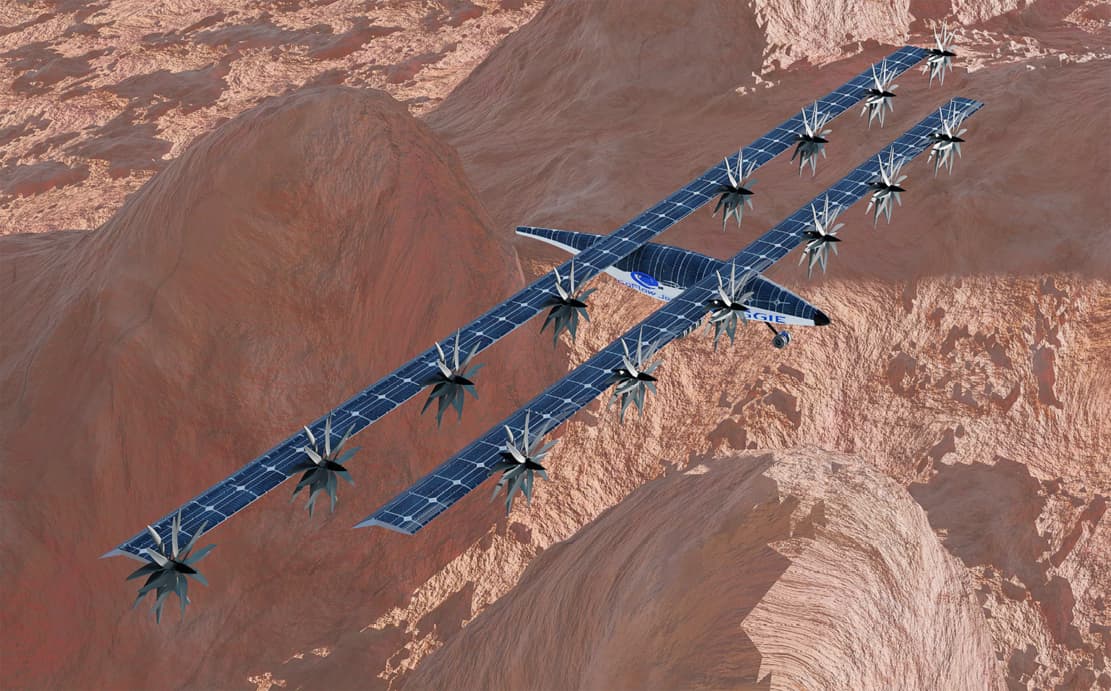Mars Aerial and Ground Intelligent Explorer is a compact VTOL solar-powered aircraft designed for efficient mobility on Mars.
NASA in its ongoing quest for space innovation, has chosen 13 new projects for its 2024 Phase I awards under the Innovative Advanced Concepts (NIAC) program. These awards, with each project receiving up to $175,000, support teams proposing cutting-edge and unconventional space technologies.
Mars Aerial and Ground Intelligent Explorer:
A groundbreaking exploration platform for Mars called Mars Aerial and Ground Intelligent Explorer (MAGGIE). It features vertical take-off/landing (VTOL) capability using advanced deflected slipstream technology with CoFlow Jet (CFJ). With a cruise Mach number of 0.25 and a high lift coefficient (CL) of 3.5, MAGGIE overcomes the challenges posed by the low density of the Martian atmosphere.
The innovative CFJ technology allows MAGGIE to achieve an ultra-high cruise CL with a CL/CDc of 9, overcoming Mars’s low Reynolds number effect. MAGGIE’s range is 179 km at an altitude of 1,000 m on a fully charged battery over 7.6 Martian days, totaling 16,048 km per Martian year. The proposed missions include investigating the Martian core dynamo, studying methane signals, and mapping subsurface water ice in mid-latitudes.
While the initial system study indicates the feasibility of the MAGGIE concept, further investigation, design, and verification are required under Martian atmospheric conditions in Phase I. If successful, MAGGIE could revolutionize Mars exploration by conducting the first global-scale atmospheric mission and significantly enhancing NASA’s capabilities on the Red Planet. The concept also holds public appeal, akin to the Ingenuity helicopter, and can potentially advance VTOL aircraft technology on Earth and other planets.
source NASA



